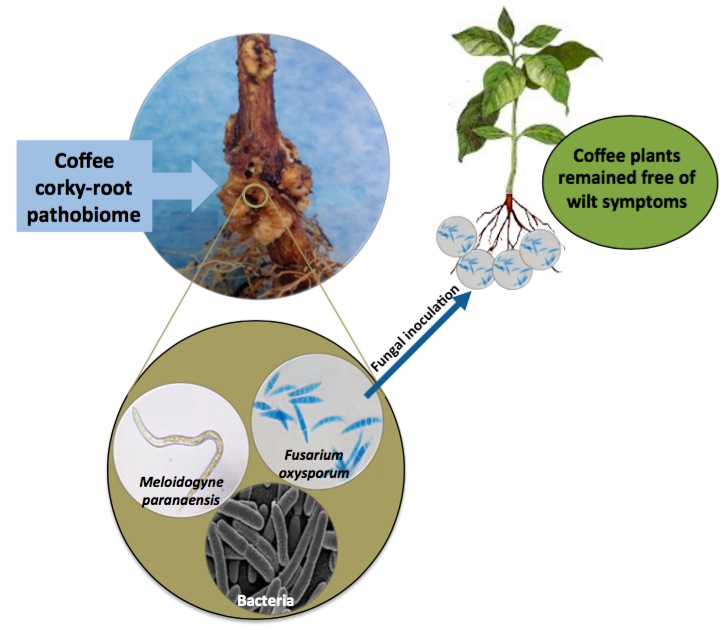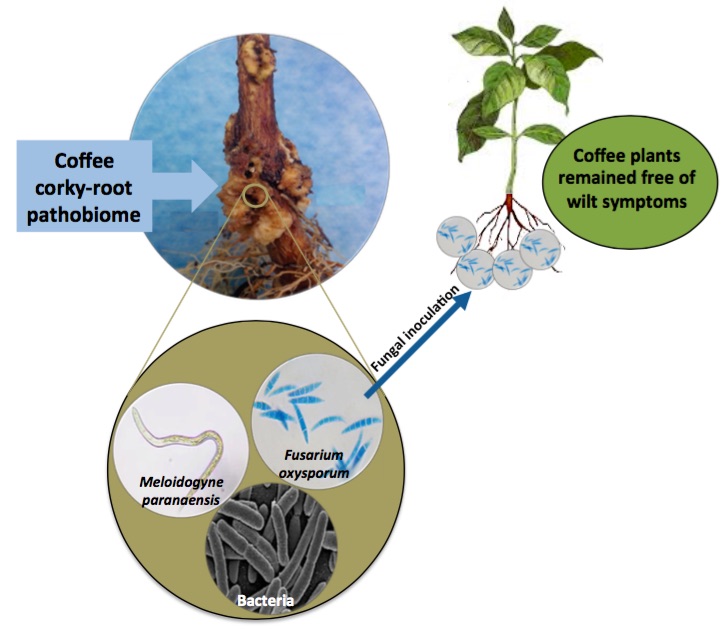Fungal diversity and Fusarium oxysporum pathogenicity associated with coffee corky-root disease in Mexico
Keywords:
Coffea arabica, root-knot nematodes, filamentous fungiAbstract

The disease known as coffee corky-roots associated to the infection by the root-knot nematode Meloidogyne paranaensis is an important issue for coffee crop in several countries. In Mexico, particularly in the Veracruz state, considerable loses are recorded annually in Coffea arabica plantations by corky-root disease. Previous studies have revealed the presence of fungi in coffee corky-root tissues. However, these fungi have not been yet identified. This work aimed to identify at species level the fungi associated to the coffee corky-root symptoms and determine their pathogenicity on coffee plants. Coffee roots with corky-root symptoms were collected in eight sites distributed through the major coffee growing region of Veracruz. Observations of inside cortical root tissues under scanning electron microscope revealed abundant mycelium and conidia in
corky-root samples in contrast with absence of any fungi development in healthy roots. Forty-nine fungi strains from internal corky-root tissue were isolated and identified at species level by ITS sequences. Fusarium oxysporum was the most frequent species and the only present in all of the corky-root samples. These strains were selected for the pathogenicity test. All F. oxysporum strains colonized the vascular system of coffee plants although none caused wilting symptoms.
Highlights
- Fusarium oxysporum is a major fungus associated with coffee corky-root disease.
- None of the oxysporum strains inoculated into the roots of coffee plants caused vascular withering symptoms
- In the tissues damaged by coffee corky-root disease interact nematodes, fungi and bacteria.

Published
Issue
Section
License
Aquellos autores/as que tengan publicaciones con esta revista, aceptan las Políticas Editoriales.


